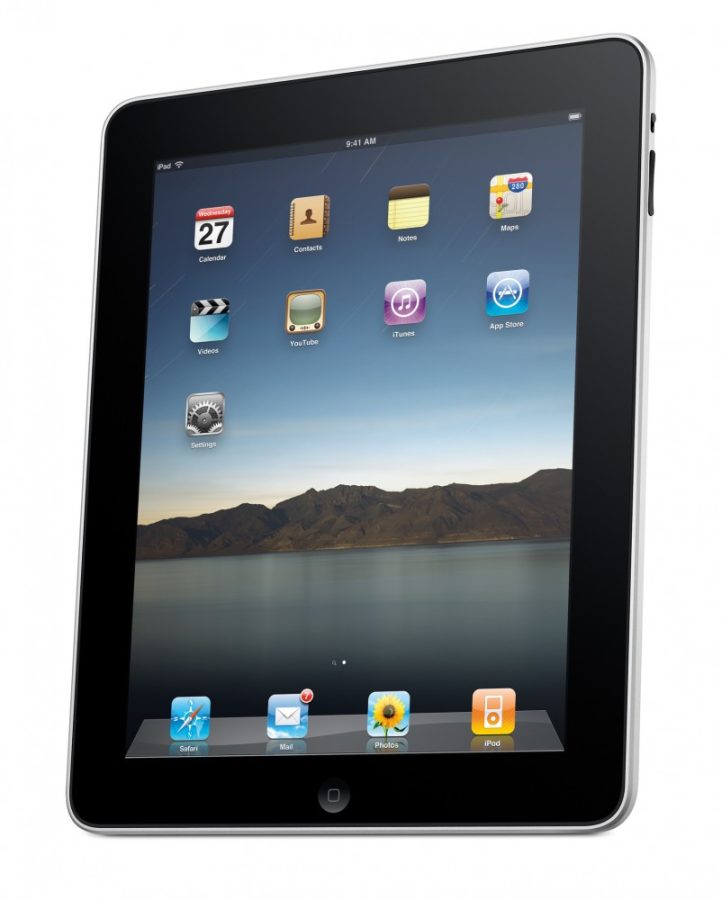The tablet computer, which goes on sale Saturday, represents a new chapter in the evolution of electronic reading devices. It and other tablet computers in the pipeline will reshape the relationship between reader and the printed word, experts say. And they could lead to new business models for local newspapers, national magazines and the book industry.
“”The iPad is acting as a catalyst for the publishing industry that is desperately needed,”” said
Apple’s just-released iBooks app, and apps from independent companies such as
Unlike earlier e-readers, such as Amazon’s Kindle, the iPad recreates the experience of reading on paper. If you lightly drag a finger across the multi-touch screen, for instance, the page curls like a physical page. Readers can search the text, change the size of the font and style, and adjust screen brightness on the page they are scanning.
“”We see this as a game-changer,”” said
Onufer is not sure what the iPad and soon-to-come devices from companies such as
“”We are very excited about this,”” Onufer said.
While the black-and-white Kindle launched the new generation of digital publishing, “”Apple is the first one that brings color into the space and color is critical,”” said
All new tablet computers share technological advances that make reading text on them similar to reading on paper.
“”I don’t get that excited about device revolutions, but this is a big one,”” Taylor said. “”It’s the degree of fidelity to the reading process that is at the core of this. People don’t really like to read off machines. These new devices refract at the same speed or even faster than eyes do. So you don’t (experience) the kind of invisible wobble that fatigues the brain and you can read longer.””
The iPad and other devices arrive as the magazine and newspaper industries suffer falling revenues as readers and advertisers shift to the Web.
“”The trend line is horrific,”” Sacks said. “”The publishing industry had a method for 100 years and it’s been successful. Now it has been thrown into this digital turmoil.””
The iPad redefines digital publishing, enabling advertisers to deploy video and interactive features to lure immediate sales, said Jeanniey Mullen, executive vice president at Zinio, whose app links readers to a catalogue of 2,000 magazines and thousands of books. That makes publications such as magazines and newspapers potentially attractive again.
“”It drives higher engagement and makes it easy to have those impulse buys. That drives higher revenue,”” she said. “”Advertisers are knocking down our publications’ doors and our doors to get involved with the iPad.””
Still, there remain many kinks. One big one is negotiating with Apple, which takes a 30 percent cut of all sales in its
“”
On the other hand, physical editions of magazines cost
The main unknown is how many people will actually buy the iPad and similar devices, and whether they are willing to pay for content, much of which they can get for free on the Web.
“”It’s too early to say what the long-term impact on the industry will be,”” said
Likewise, book publishers don’t know what the digital revolution will ultimately mean for their bottom line. Right now, e-books represent only three-to-five percent of the book industry, said
“”Book publishing has been pretty much the same for a long time. Now everything is being looked at in new ways,”” Langevin said. “”If e-books increase consumption and people read more, that will be great. If consumption decreases, the whole publishing market could shrink.””
Sacks thinks the publishing industry will derive nearly 60 percent of its revenue from digital editions by 2020.
“”Print is not going to go away,”” he said. “”But the predominant way people will read will be digitally. Our survival relies on digital.””









